Spanish Banks
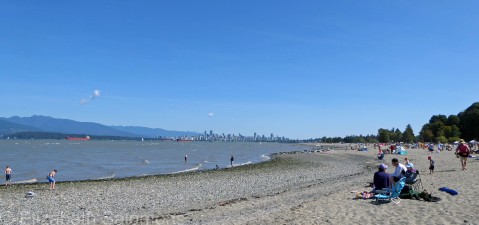
It had to end, eventually.
This week marked the transition from our Summer of Covid, such as it was, to an autumn that appears to be headed towards another lockdown. I have begun mentally preparing myself for what I expect to be calling the Long Winter.
But before we spiral too far down, here’s one final beach post to share with you.
And what a beach it is.
Spanish Banks is the furthest of the beaches along the southern shore of English Bay. It looks a lot like Locarno and Jericho, but with one rather significant difference. That would be the sandbank it sits on, which lets you walk far out into the bay at low tide.
Both Spanish Banks and English Bay got their names in commemoration of an accidental meeting that took place in 1792 between two expeditions: the English one led by George Vancouver and the Spanish one led by Cayetano Valdés y Flores and Dionisio Alcalá Galiano. It was an accidental meeting because the English did not know the Spanish were in the neighbourhood, nor were the Spanish aware that the English were nearby.
Awkward.
In the end, though, they all got along and spent several weeks exploring and charting the Strait of Georgia together.
Although Spanish Banks, like all of Vancouver’s beaches, has swimmers and picnickers in abundance, it is really popular with kitesurfers and skimboarders at low tide.

Locarno Beach
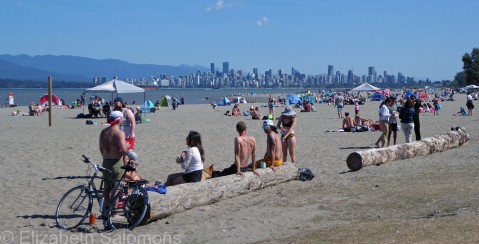
Locarno Beach is like the proverbial middle child. Sandwiched between its wildly popular sister, Jericho Beach, and its aloof and distant brother, Spanish Banks, it is easily missed and often bypassed.
The real reason Locarno is quieter, though, is because it’s a designated “quiet beach.” Meaning: no loud music. Its name comes from an unlikely source: a town in southern Switzerland right next to the Italian border.
Here’s a pro tip: being quieter and often overlooked means that Locarno is the only beach where there are no lines for either the concession or the washrooms.
Even on a hot summer long weekend.

Jericho Beach
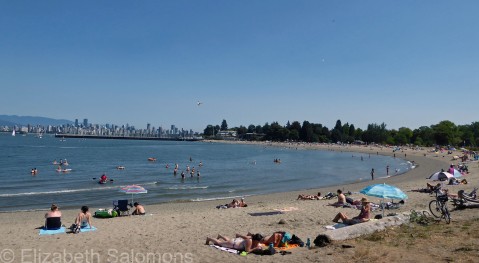
About a half hour walk (or ten-minute bike ride) past Kitsilano Beach is another of Vancouver’s most popular beaches. That would be Jericho.
Jericho Beach got its name from a man named Jeremiah Rogers, who in the 1860s established a logging company nearby that he named Jerry & Co. Jerry & Co. eventually morphed into “Jericho.” Or the name evolved from Jerry’s Cove. (You decide which version you want to believe.)
Long before Jeremiah, or any European settlers for that matter, came along, the Musqueum Nation lived on the beach in a village they called iy’a’l’mexw, which means “good land.”
There has been a military presence at Jericho Beach since 1920, and Jericho Garrison was established during World War II as the Pacific command headquarters for the Canadian Forces. Later, some of the military buildings along the beach were repurposed: the army barracks were converted into the Jericho Beach Youth Hostel, a military gym is now the Jericho Arts Centre, and the base itself became the Jericho Sailing Centre.

It’s the Jericho Sailing Centre that makes Jericho Beach so popular and busy today. There are schools, clubs, and rentals for all types of water sports, including sailing, kayaking, windsurfing, and paddle boarding. In addition, Jericho Beach Park, just adjacent to the beach, is the site of the annual Vancouver Folk Music Festival.
All these varied activities are enough to keep most people happy and busy, but I have to say, nothing beats knocking off work early and enjoying a beer and burger with friends on the deck of the Jericho Sailing Centre.
I should know.
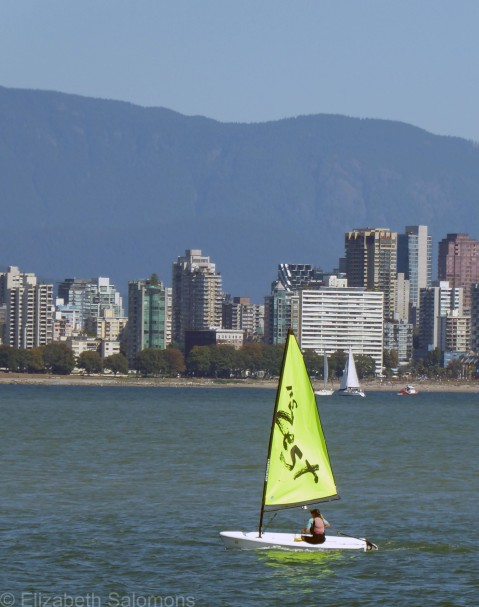
Kitsilano Beach

The beach generally thought to be Vancouver’s most popular has one thing in spades.
That would be attitude.
I mean, sure, Kits Beach is a great beach. You can swim in the ocean or do laps in the adjacent saltwater pool. There’s are tennis courts, if you like, or beach volleyball. If you’re hungry, there’s both a concession stand and a dine-in restaurant, or you can cross the street and enjoy Happy Hour at any number of nearby pubs.
But for me, truthfully, other than an occasional picnic with friends, Kits Beach is somewhere I always walk, cycle, or drive past on my way to somewhere else. It’s just a little too crowded for my taste.
And so, I leave Vancouver’s most popular beach to those who want to see and be seen.
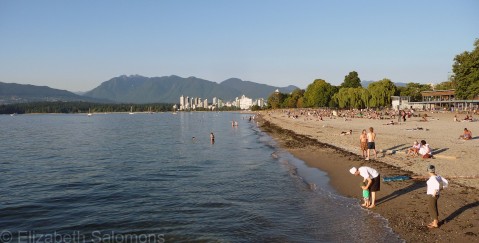
Third Beach

My favourite Vancouver beach is Third Beach. Like Second Beach, it’s part of Stanley Park, but it is enough of a walk from my home that it feels like a destination beach. And with its small parking lot, it’s never as crowded as some of the more popular beaches on the other side of English Bay.
Much of the forest behind Third Beach was cleared by the military during World War II to make room for an army barracks. The soldiers were there to command a gun battery at Ferguson Point and a lookout point opposite Siwash Rock, both of which overlook Third Beach. The gun installation is no longer there, but the lookout still is.
It’s odd, some 80 years later, to think of Stanley Park as a strategic military site, but because of its location at the entrance to Burrard Inlet and the Port of Vancouver, it most definitely was.
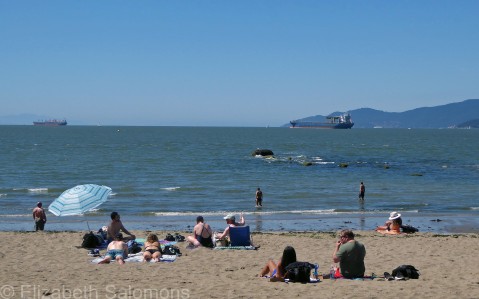
Second Beach

Second Beach is the smallest of Vancouver’s beaches. It’s located alongside the Stanley Park Seawall, next to Second Beach Pool and Ceperley Meadow.
The beach is a popular picnic site, especially for large, multi-generational families, because of all the amenities available. The meadow provides lots of room for kicking around a ball, and in addition to the beach and the pool, there are two playgrounds and a concession stand.
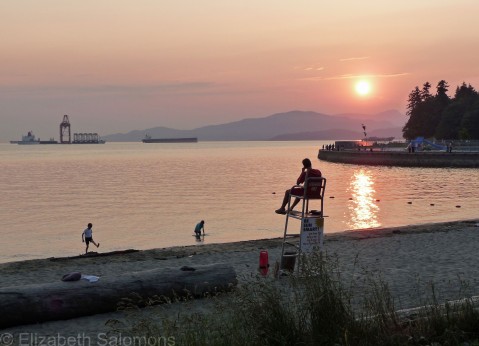
English Bay Beach
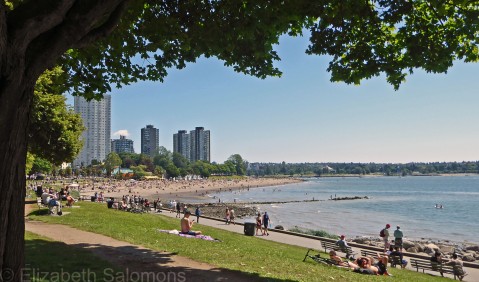
English Bay Beach is the most urban-looking of Vancouver’s beaches, thanks to its close proximity to the residential towers of the West End.
Also known as First Beach (although no one calls it that), English Bay Beach has been popular with the residents of Vancouver since the 1890s, which is when they first began building summer cottages along the bay. Two of those cottages were still standing when I moved to the neighbourhood some 20 years ago, but they’ve since been down torn down and replaced with a boutique condo.
Typically at the end of July, more than half a million people descend on English Bay Beach for three nights of fireworks competition during the annual Celebration of Light. Not this year, of course — and who would have thought I would miss all that chaos?
Instead, this year, English Bay Beach became infamous for its beach log jail when our iconic beach logs were locked up behind metal cages for the first ten weeks of the pandemic. The reason? To avoid large groups congregating on the logs.
English Bay Beach is popular with swimmers and although the lifeguards are back during this summer of Covid, the floating slide is not.
Maybe next year.
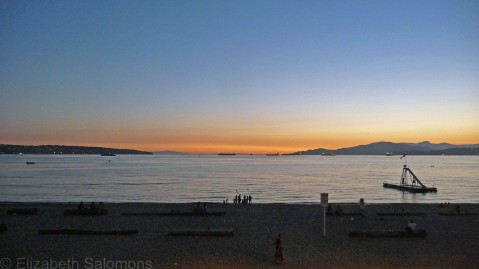
Sunset Beach
Here we go again. Sigh.
Who knew beaches would turn out to be such a lightning rod during this pandemic?
Beach-shaming has become the thing to do whenever Vancouverites take advantage of a sunny weekend and flock to the beaches. People who are not at the beach get upset at those who are, and, well, words are said.
The thing is, the people doing the shaming all seem to live in large suburban homes with large suburban backyards, while the people who are spending time on the beach live in tiny condos with little or no outdoor access.
The other issue is that those who are doing the shaming base their indignation on photos that, intentionally or not, are quite misleading. Camera angles and lens sizes can distort reality, I’ve learned. And when you walk past one of Vancouver’s beaches on a sunny weekend, it is clear that people are, for the most part, staying apart.
Vancouver has not been alone in its beach-shaming. There have been similar incidents of crowded parks and over-the-top reactions in Montreal and Toronto as well. The latest uproar — which is what prompted me to write this post — concerns the crowds seen at Sylvan Lake, Alberta, last weekend. I spent many childhood summers swimming in Alberta lakes — I know how lovely they can be on a hot summer’s day. I’ll reserve judgement on what the Albertans were up to last weekend, but I will say this: Central Alberta isn’t exactly known for its high-density neighbourhoods.
Some of the smartest talk I’ve heard about the pandemic relates to these kinds of incidents. We can’t see the virus, but a large group of people gathered together outdoors is visible in all kinds of ways. We know that yelling at a virus is pretty futile, but somehow yelling at a group of people who aren’t behaving as we think they should makes us feel better. Or morally superior? I dunno.
There’s also the novel idea that we — all of us — should focus not on what behaviours we are entitled to, but on what impact our actions have on others. Pandemic ethics in a nutshell, I call it. Meaning, those of us who do have access to a backyard, or perhaps a smallish, but perfectly adequate park in our immediate neighbourhood, should stay close to home instead of heading out to a popular park or beach where there might be a crowd. Leave room at the park or beach for those who don’t have a backyard — you know, the family who’s been cooped up indoors all day, or the group of people who live alone and have limited options for socializing in a physically distant way.
And that is why when reporters asked a few months ago why Vancouver wasn’t closing its parks and beaches, our provincial health officer responded by first reminding everyone that we need to stay apart, but then urging everyone to get outdoors for the sake of their mental health.
I’ve been meaning for some years to do a summer series on Vancouver’s beaches, but time got away from me, as time tends to do. Now I’m thinking my procrastination has been rather fortuitous in that there has never been a better time to talk about Vancouver’s beaches than during this summer of staycations. I have several within walking distance of my home — you can’t get much more staycation than that.
To start us off, here’s a photo of my closest beach. Located along the appropriately named Beach Avenue, Sunset Beach is not wildly popular for swimming, likely due to its proximity to False Creek and rather a lot of boat traffic. But it is a great spot for picnics, and for watching the sun set. I took this photo from Burrard Bridge a couple of summers ago.
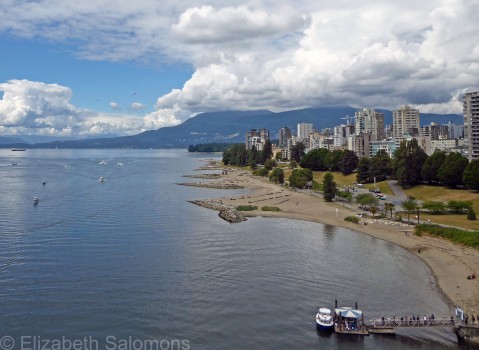
Through My Lens: Snowy Rocks on the Beach
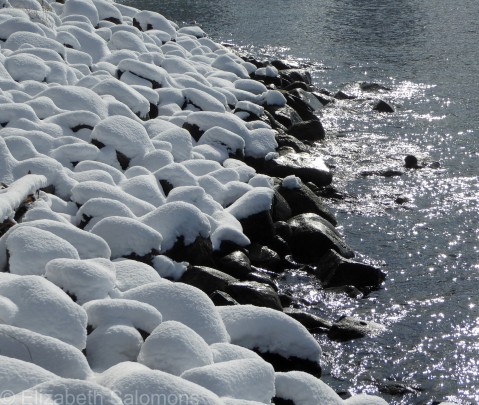
Typically, in February I am posting photos of crocuses. Instead, here’s a photo I took this morning of the snow-covered rocks along the beach at English Bay.
Which means it’s not a typical February. (Although … come to think of it, last year’s February wasn’t so typical either.)
Vancouver got dumped with about 25 centimetres of snow yesterday and last night. It’s not an unusual amount of snow for us — we often have one, maybe two good snowstorms every winter — but what is unusual is to get so much snow so late in the season. It’s almost March, folks.
The crocuses, I assure you, are in full bloom, but are well buried today. And tonight’s forecast is for rain, so tomorrow is going to be an unholy muddy mess.
Ko Samet
It’s that time of year when people tend to go all reflective and pensive and (maybe) make a resolution or two. With this year being the tenth anniversary of the Boxing Day Tsunami, my pensivity has turned to Ko Samet, an island in the Gulf of Thailand where my sister and I spent New Year’s Eve 2000.
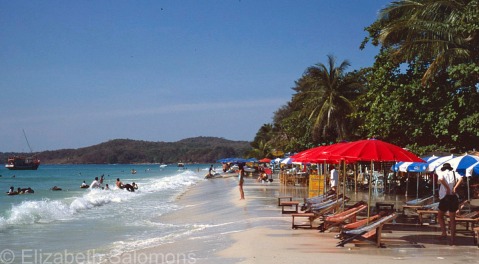
Ko Samet was not directly affected by the tsunami, but the time we spent there made it just a tiny bit possible for me to imagine what it must have been like to witness such a horrific event.
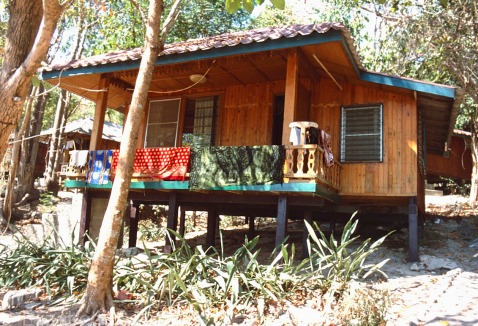
As far as Thai islands go, Ko Samet is a quiet one, and my sister and I rented a bungalow on the beach at its quieter end. As far as New Year’s Eves go, it was probably one of the most relaxing ones I’ve ever had.
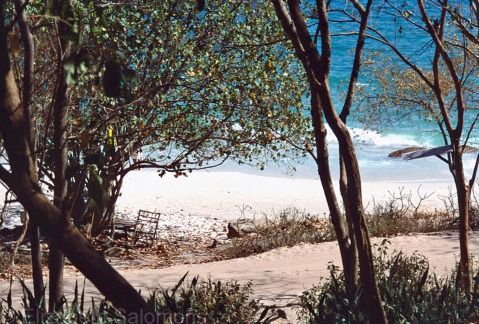
We had a spectacular view of the beach from our verandah ― a beach with the whitest sand and bluest water I have ever seen ― and we spent most of our days lying on that beach.

I also spent a lot of time reading or writing on our verandah.

Every time I looked up, there was something to see. Which, naturally, made me start playing with my camera.

What we didn’t know until we arrived on Ko Samet is that the island is equally, if not more so, as popular with Thai holiday-goers as it is with foreign tourists. That made for a much more authentic Thai island holiday than I could ever have hoped for.
I have no idea how much Ko Samet has changed in the decade and a half since we were there, but I hope not too much.
Because it was perfect.
